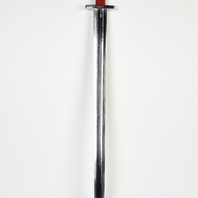
Viking Objects
Reproduction Viking Age Sword
A reproduction of the sword found in Grave 511 at Repton. The hilt is made of wood laths wrapped in tabby weave textile strips. The scabbard is made of two wooden laths, lined with trimmed sheep fleece, and covered in an oak-stained, stitched, calf-leather cover. The strap slide is copper alloy and inserted under the leather. The sword belt shown with the scabbard is based on the sword belt from Grave 511 at Repton.
Read More
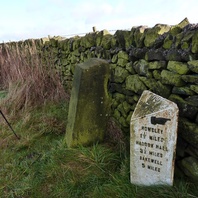
Viking Names
Great Rowsley
Great Rowsley, in the High Peak Hundred of Derbyshire, comes from either the Old Norse male personal name Hrólfr or the Old English male personal name Hroðwulf. The second element is Old English leah ‘A forest, wood, glade, clearing; (later) a pasture, meadow’, so if the first element is the Old Norse personal name then it is a hybrid place-name. The affix ‘great’ was a later addition to distinguish this Rowsley from Little Rowsley in the Darley Parish of the High Peak Hundred.
Read More
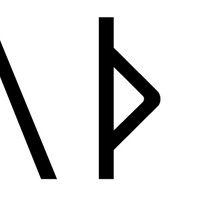
Viking Names
Modir
The Old Norse female name Móðir is found in Motherby, Cumberland, and has been suggested as the first element in Moodersley, a minor name in Kedleston, Appletree Hundred, Derbyshire. The name Kedleston itself includes the male personal name Ketill. Móðir means literally ‘mother’ and the use of family terms as personal names (compare the use of ‘Sonny’ in English), while not frequent, is attested in Scandinavia.
Read More
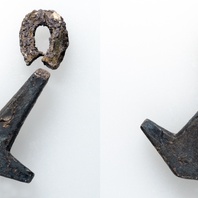
Viking Objects
Thor’s Hammer Pendant (1989-59/7224)
A silver hammer-shaped pendant found in Grave 511 at Repton. This is the grave of a man who appears to have died violently, taking a vicious cut to his loins. These may have been worn to show devotion to the god Thor, or to secure the god’s protection, although there is little evidence to support this interpretation. Pendants like this have been found made of lead, copper alloy, silver and gold, showing that many different strata of society could have worn them.
Read More
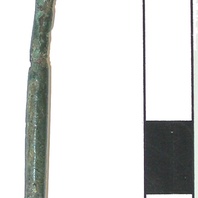
Viking Objects
Expanded-Head Pin (1986/975-AE86)
A copper-alloy pin found at the site of the Little Chester Roman fort. This loose find was found on top of a Roman metalled surface. It has a lozenge-shaped head that is typically Anglo-Scandinavian, but the lack of a secure finds context and its proximity to a Roman surface indicates that it could be Roman.
Read More
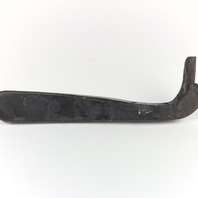
Viking Objects
Reproduction Iron Key
An iron key based on an original found in Grave 511 at Repton, Derbyshire. Iron keys were not only practical items but also symbols of status. Women were often given keys to the families chests of valuables. They also are often buried with keys, representing their authority in the household.
Read More
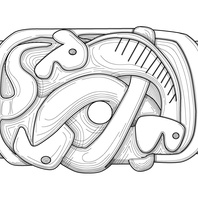
Viking Designs
Drawing of an Urnes-Style Mount
A drawing of a cast copper alloy sword fitting with Urnes-style decoration.
Read More
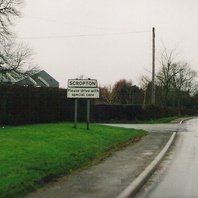
Viking Names
Scropton
Scropton, in the Appletree Hundred of Derbyshire, comes from the Old Norse male personal name Skropi and the Old English tun ‘farm, settlement’. It is thus a hybrid name. It is a joint parish with Foston.
Read More
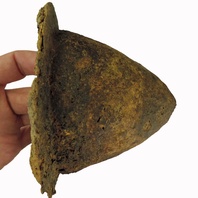
Viking Objects
Shield Boss (1989-59/9013)
This is a probable Viking shield boss from Repton, Derbyshire. This shield boss is possible evidence for the Viking Great Army’s overwintering at Repton in 873. The typical construction of a ‘Viking’ shield at the time involved several wooden planks glued together and cut into a circle. The face of the shield was then covered in linen or rawhide with rawhide edging that was either tacked or sewn on. Finally, a metal boss would be attached along with the handle over a hole in the centre. The purpose of the metal boss was to protect the user’s hand in combat.
Read More
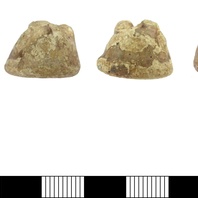
Viking Objects
Cast Lead-Alloy Gaming Piece (DENO-646EE0)
A complete cast lead-alloy early medieval gaming piece. This and similar pieces have also been interpreted as weights although the gaming piece interpretation is more secure. Pieces like this would have been used to play hnefatafl and/or Nine Men’s Morris, both of which are known to have been played in Scandinavia in the Viking Age.
Read More
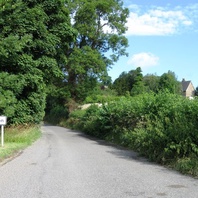
Viking Names
Kirk Ireton
The first element of Kirk Ireton, in the Wirksworth Hundred of Derbyshire, is the genitive singular or plural of the Old Norse ethnonym Íri, ‘an Irishman; probably also a Norseman who had lived in Ireland’ combined with the Old English element tun ‘an enclosure; a farmstead; a village; an estate’. Old Norse kirkja ‘a church’ was affixed at a later date. Traditionally, the place-name has been interpreted as referring to a settlement of Irishmen; probably Norsemen who lived in Ireland. However, the exact implications of such a name are not yet fully understood and are the subject of ongoing work by Dr Jayne Carroll of the Institute for Name-Studies, University of Nottingham.
